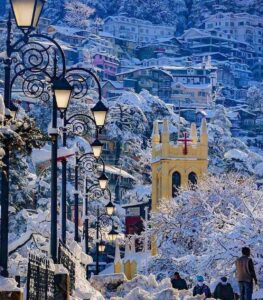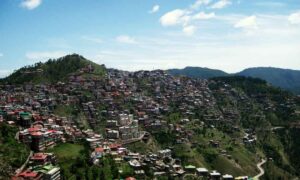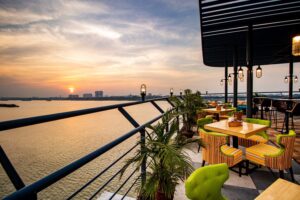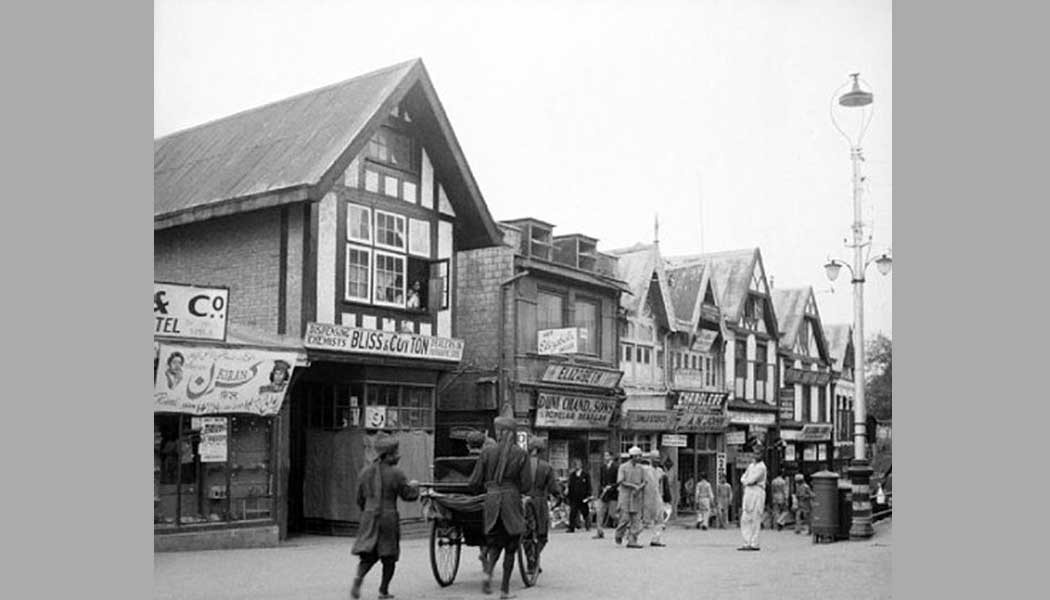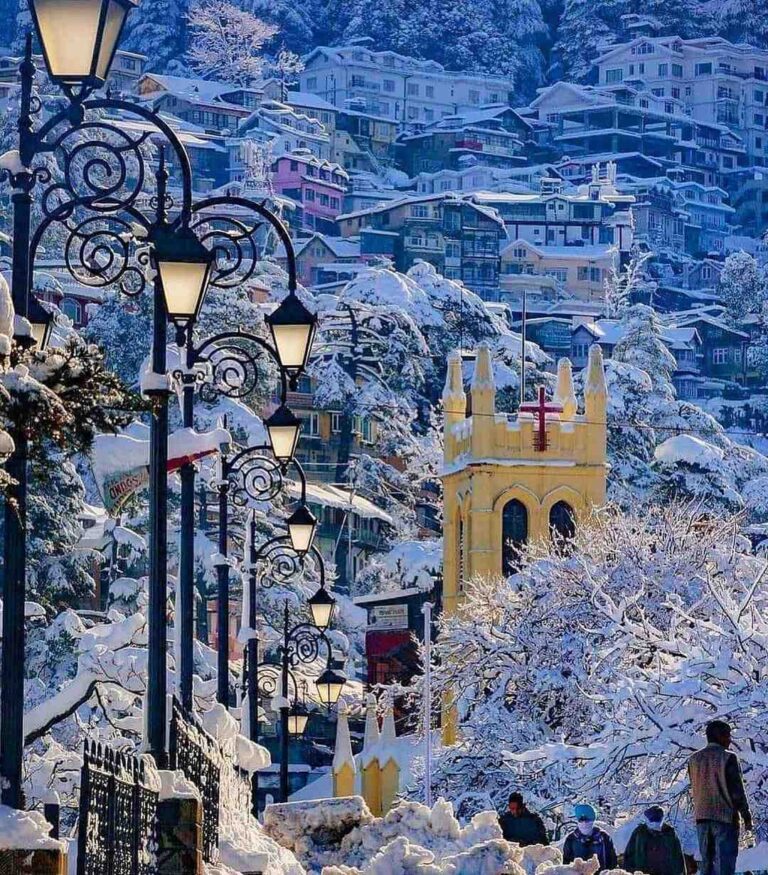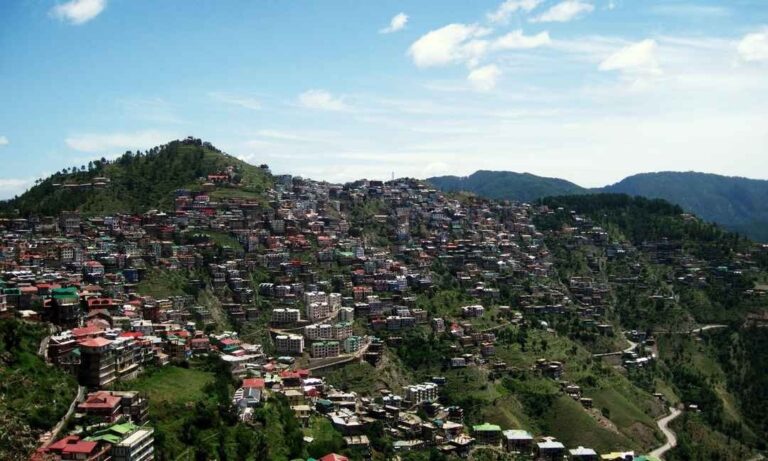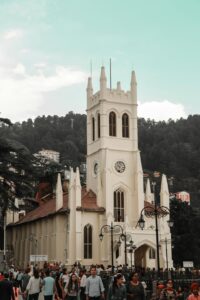Introduction
Nestled in the lap of the Himalayas, Shimla is often called the “Queen of Hills.” Known for its sweeping mountain vistas, pine-clad slopes, and colonial-era charm, Shimla has long been one of India’s most beloved hill stations. At its very heart lies Mall Road, the central promenade that has witnessed more than two centuries of transformation.
Mall Road is far more than just a street. It is a living chronicle of Shimla’s past, a space that has echoed with the footsteps of British officers, Indian freedom fighters, Bollywood stars, and millions of travelers. From its inception during the colonial era to its modern-day role as a bustling tourism hub, Mall Road has carried Shimla’s history on its stone-paved shoulders.
In this article, we’ll take a detailed journey into the history of Mall Road Shimla—from its British roots to its vibrant present—exploring the architecture, politics, culture, and stories that have made it iconic.
Shimla Before the Mall Road
The Land Before Colonization
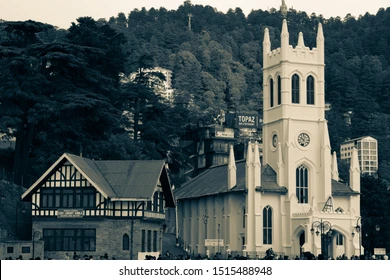
Long before Shimla became synonymous with Mall Road, it was a quiet Himalayan hamlet. The hills were covered in dense forests of oak, pine, and deodar. Small communities of local villagers lived in scattered huts, practicing subsistence farming and worshipping in ancient temples dedicated to deities like Shyamala Devi, from whom Shimla is believed to derive its name.
The Gorkha Occupation
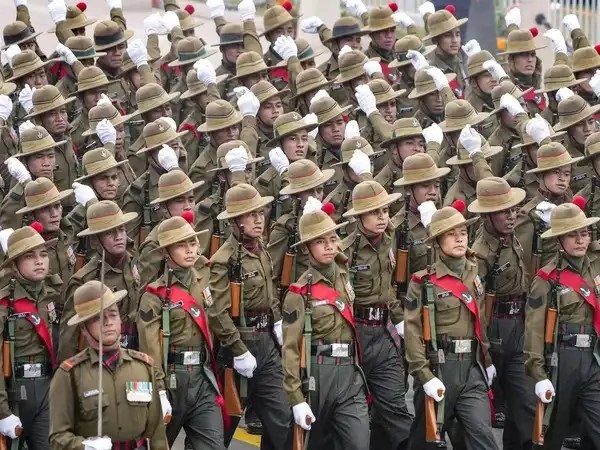
In the late 18th century, Shimla was swept into the political turbulence of the subcontinent. The Gorkhas of Nepal invaded and occupied much of Himachal Pradesh, including Shimla. For nearly two decades, the region endured instability until the Anglo-Gorkha War (1814–1816). The British East India Company, emerging victorious, signed the Treaty of Sugauli (1816), reclaiming the hill territories.
Discovery by the British
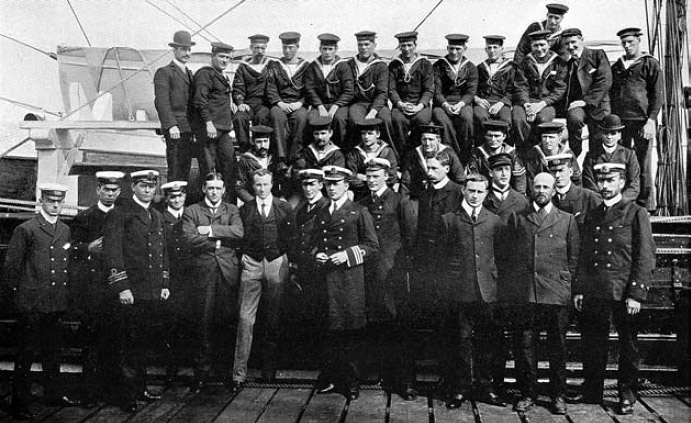
The British were quick to see Shimla’s potential. In 1819, Captain Charles Kennedy built one of the first permanent houses in Shimla. Reports by British surveyors described the climate as “healthier and more agreeable than the plains of Hindustan.” By the 1820s, Shimla began drawing officers and their families as a summer retreat.
It was in this period that the foundations of what would later become Mall Road were laid.
The Birth of Mall Road
Concept of the “Mall” in British Hill Stations
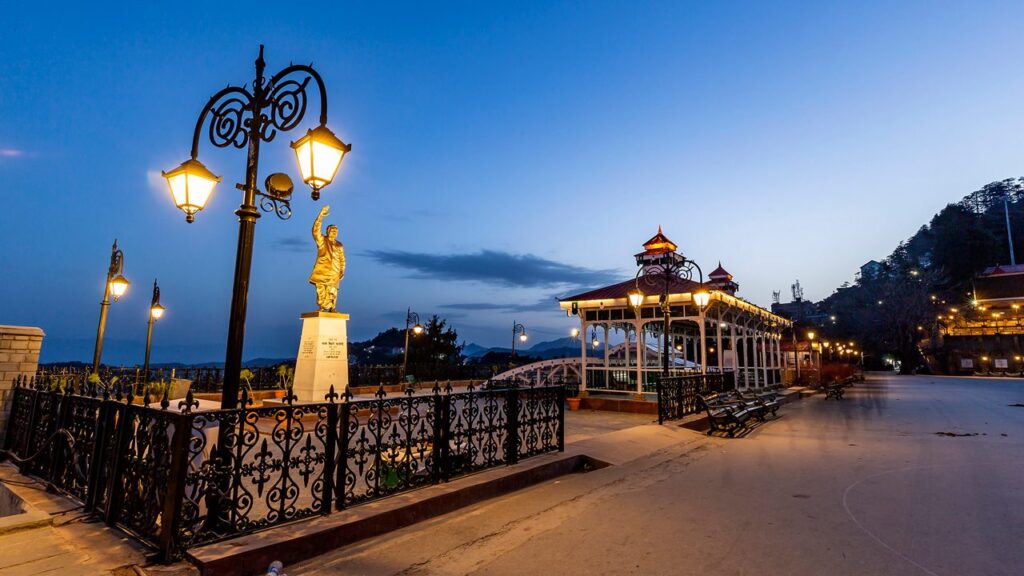
In British India, hill stations were designed not only as escapes from the heat but also as miniature versions of English towns. The “Mall” was a concept borrowed from Europe—a broad, pedestrian-only promenade where the elite could stroll, socialize, and shop. Shimla’s Mall Road was envisioned as both a leisure space and the administrative core of the new summer capital.
Construction Challenges
Building a road at an altitude of over 7,000 feet was no easy task. Engineers had to carve pathways into steep hillsides, strengthen slopes with retaining walls, and use local stone for durability. Snow in winter and landslides during the monsoon posed constant challenges.
Despite these difficulties, by the 1830s and 1840s, Mall Road began to take shape. Over the next few decades, it expanded with colonial-style buildings, churches, clubs, and government offices, turning into the lifeline of Shimla.
Colonial Era – Mall Road as the Heart of British Shimla
Political Importance
In 1864, Shimla was officially declared the Summer Capital of British India. This decision elevated Mall Road to the epicenter of political power. During the scorching summers of Delhi and Calcutta, the British administration moved lock, stock, and barrel to Shimla. Policies that shaped the destiny of millions of Indians were discussed in the Viceregal Lodge, connected directly to Mall Road through The Ridge.
Social & Cultural Life
Mall Road wasn’t just about politics; it was also about prestige. It was the place to see and be seen. The British elite organized evening promenades, where officers, their wives, and children walked in their finest attire.
- The Gaiety Theatre (1887): Hosted plays, operas, and even early cinema screenings.
- Clubs: The Amateur Dramatic Club (ADC) and United Services Club were centers of elite networking.
- Shops & Cafes: Imported goods, tea parlors, and bakeries created an atmosphere reminiscent of Victorian England.
Landmarks Built
- Christ Church (1857): The second-oldest church in North India, with its iconic stained-glass windows.
- Scandal Point: Famous for the legend of the Maharaja of Patiala eloping with the Viceroy’s daughter.
- Town Hall (1908): An elegant colonial building that still houses Shimla’s municipal corporation.
Exclusivity & Restrictions
Mall Road was once off-limits to Indians. Signs were posted stating, “Indians and dogs not allowed.” Locals had to remain confined to the lower bazaar, while the Europeans enjoyed their exclusive promenade. This segregation, though unjust, became part of Shimla’s colonial identity.
Mall Road and the Indian Freedom Struggle
Silent Witness to Change
As nationalist fervor grew in the early 20th century, Shimla—though a colonial stronghold—became entwined in India’s freedom movement. Meetings, protests, and pamphlet distributions often took place in the shadow of Mall Road.
The Shimla Conference of 1945
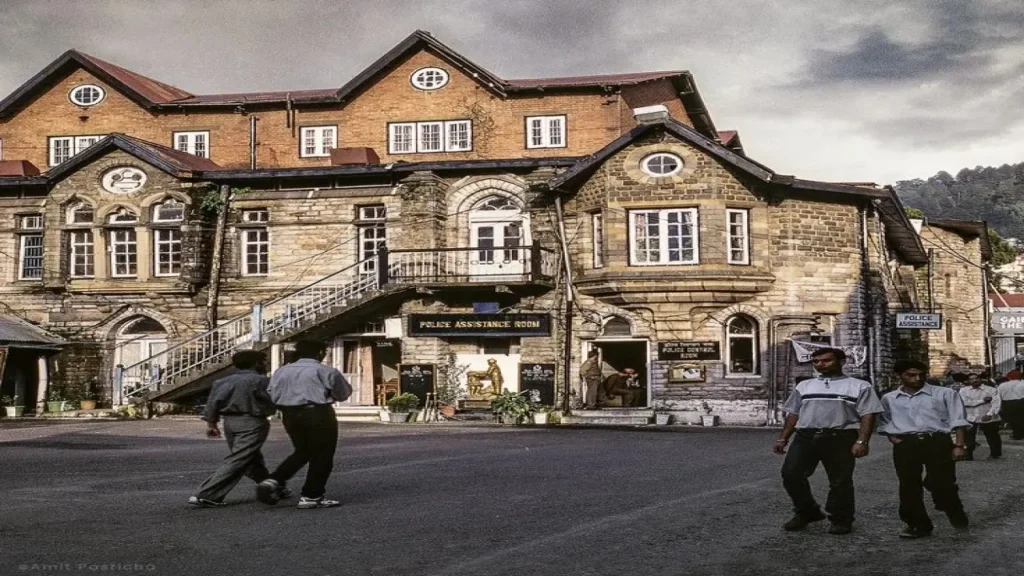
One of the most historic events connected to Mall Road was the Shimla Conference of 1945, held at the Viceregal Lodge. Leaders like Mahatma Gandhi, Jawaharlal Nehru, Sardar Patel, Jinnah, and Lord Wavell gathered to negotiate India’s political future. While the talks eventually failed, they symbolized India’s march toward independence.
Freedom fighters walking through Mall Road blurred the line between colonial exclusivity and Indian assertion.
Post-Independence Transformation
Opening Up Mall Road
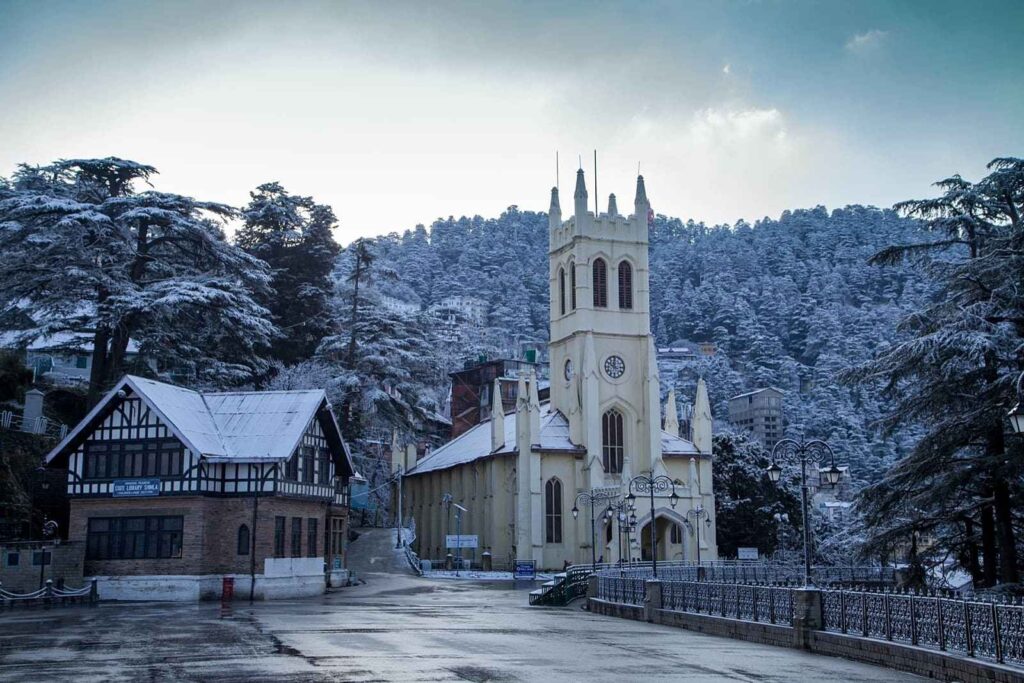
After independence in 1947, the barriers fell. Mall Road became open to all Indians. What was once a symbol of colonial elitism transformed into a public promenade, where people of all classes could mingle.
Preservation of Colonial Heritage
Many British-era buildings were repurposed:
- The Town Hall became the seat of Shimla Municipal Corporation.
- Gaiety Theatre was restored and continues to host cultural programs.
- Christ Church remained a functioning place of worship.
Rise of Tourism
By the 1970s and 1980s, Mall Road had become synonymous with Shimla tourism. From woolen shops to Himachali caps and from quaint cafes to fast-food joints, the road evolved into a shopper’s paradise while retaining its colonial architecture.
Mall Road Today – A Blend of Old and New
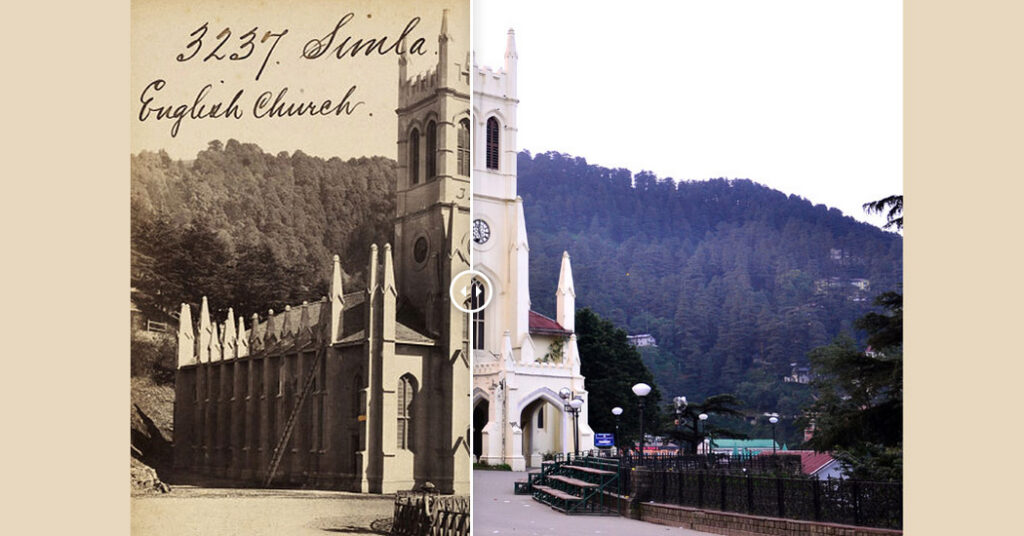
Key Attractions
- The Ridge: A large open space adjacent to Mall Road, hosting festivals and parades.
- Scandal Point: A lively meeting place with views of the valley.
- Shopping Arcades: Handicrafts, jewelry, books, and souvenirs.
- Food Culture: Cafes like Indian Coffee House and bakeries that serve age-old recipes.
Government Presence
Several administrative offices still line Mall Road, giving it a mix of governance and tourism.
Festivals & Events
- Shimla Summer Festival in June brings music, dance, and fairs.
- Christmas & New Year celebrations turn Mall Road into a winter wonderland.
Challenges of Modern Mall Road
- Overcrowding: With thousands of tourists daily, Mall Road struggles with congestion.
- Environmental Issues: Landslides, deforestation, and climate change impact its stability.
- Commercialization: Rapid expansion of shops sometimes threatens the heritage look.
- Traffic Management: Vehicles are banned, making Mall Road pedestrian-only—but access logistics remain tricky.
Mall Road in Literature, Cinema, and Popular Culture
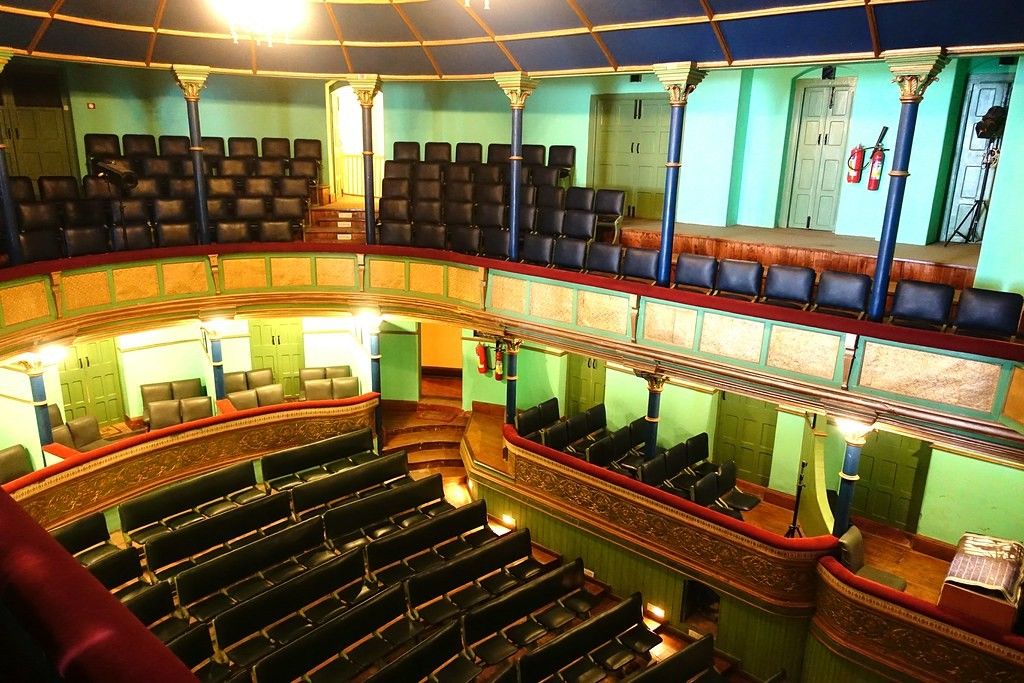
- Featured in travelogues by British officers and Indian writers.
- Bollywood films like Black (2005) and Tamasha (2015) shot scenes here.
- TV serials have used Mall Road as a backdrop for its old-world charm.
The street has become a symbol of hill-station romance in popular imagination.
Future of Mall Road
Heritage Preservation
The Himachal Pradesh government is focusing on restoring colonial buildings while modernizing amenities.
Eco-Friendly Initiatives
Smart lighting, waste management, and eco-tourism strategies are being planned under Shimla’s Smart City Project.
Sustaining Its Charm
The challenge lies in balancing modernization with preservation. Mall Road’s appeal is in its history; maintaining that legacy while embracing progress will define its future.
Conclusion
From its colonial beginnings as an exclusive promenade to its present role as a vibrant public hub, Mall Road Shimla is a living heritage site. It has seen British officers in horse-drawn carriages, Indian freedom fighters marching for independence, and modern tourists sipping coffee while gazing at snow-clad mountains.
It is not just a road—it is a symbol of Shimla’s journey from colonial charm to modern icon. For anyone visiting Shimla, walking along Mall Road is like stepping into a time machine where every stone whispers history.

